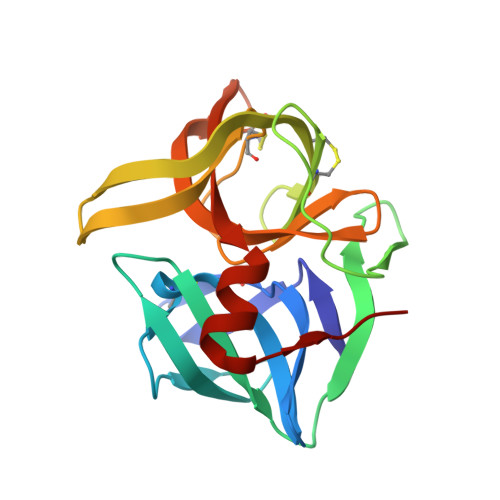Mesophile versus Thermophile: Insights Into the Structural Mechanisms of Kinetic Stability
Kelch, B.A., Agard, D.A.(2007) J Mol Biol 370: 784-795
- PubMed: 17543987
- DOI: https://doi.org/10.1016/j.jmb.2007.04.078
- Primary Citation of Related Structures:
2PFE - PubMed Abstract:
Obtaining detailed knowledge of folding intermediate and transition state (TS) structures is critical for understanding protein folding mechanisms. Comparisons between proteins adapted to survive extreme temperatures with their mesophilic homologs are likely to provide valuable information on the interactions relevant to the unfolding transition. For kinetically stable proteins such as alpha-lytic protease (alphaLP) and its family members, their large free energy barrier to unfolding is central to their biological function. To gain new insights into the mechanisms that underlie kinetic stability, we have determined the structure and high temperature unfolding kinetics of a thermophilic homolog, Thermobifida fusca protease A (TFPA). These studies led to the identification of a specific structural element bridging the N and C-terminal domains of the protease (the "domain bridge") proposed to be associated with the enhanced high temperature kinetic stability in TFPA. Mutagenesis experiments exchanging the TFPA domain bridge into alphaLP validate this hypothesis and illustrate key structural details that contribute to TFPA's increased kinetic thermostability. These results lead to an updated model for the unfolding transition state structure for this important class of proteases in which domain bridge undocking and unfolding occurs at or before the TS. The domain bridge appears to be a structural element that can modulate the degree of kinetic stability of the different members of this class of proteases.
Organizational Affiliation:
Howard Hughes Medical Institute and the Department of Biochemistry and Biophysics, University of California, San Francisco, 600 16th St. San Francisco, CA 94158-2517, USA.

















